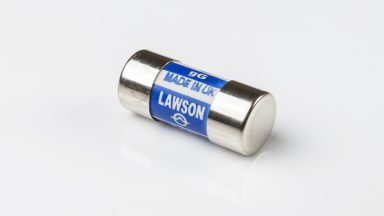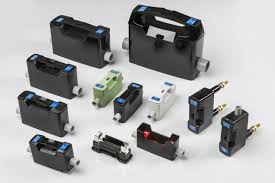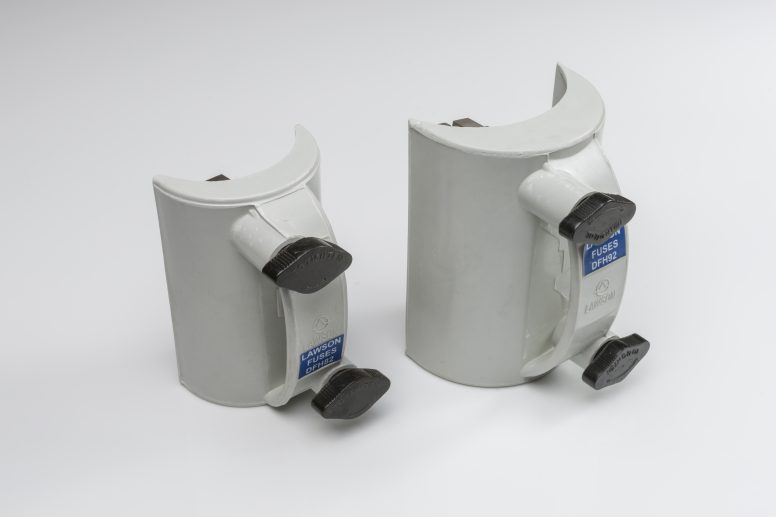Why Should You Use Cylindrical Fuses in Electrical Circuits?

Strong 8k brings an ultra-HD IPTV experience to your living room and your pocket.
Introduction
Cylindrical fuses are an essential component in the protection of electrical circuits, avoiding damage and ensuring safe operation of the different elements in the installation.
The value of cylindrical fuses:
Protection against overloads: Cylindrical fuses are used to protect circuits against overcurrents by serving as the "weak link," which ruptures if the current is higher than a safe level. This avoids general damage and reduces the risk of fires due to electrical overloads.
Integrity of the circuit: By discontinuing the flow of electric current during a fault, fuses ensure the integrity of devices that constitute the circuit, which ensures the reliability and endurance of more sophisticated electronic systems.
What Is a Cylindrical Fuse?
A cylindrical fuse is a fuse that has a tubular-shaped body (usually ceramic or glass) with metal caps on each end. Inside the tube is the fuse element (usually a thin wire or strip) that melts and opens the circuit when too much current passes through. Consequently, it stops the flow of electricity.
Cylindrical fuses come in various sizes and ratings, so they can be used in many electrical applications - from home electronics to large industrial machines.
How Do Cylindrical Fuses Work?
Cylindrical fuses follow a simple but effective principle:
When the current flowing through the circuit exceeds the fuse’s rated value, the fuse element inside heats up and melts. This breaks the electrical connection, protecting your device or system from potential damage.
Here’s a quick breakdown of what happens:
Normal current → current flows smoothly through the fuse.
Overcurrent → fuse element heats up.
Excess current → element melts → circuit breaks.
This entire process happens in milliseconds, helping to prevent short circuits, fires, and equipment failure.
1. Reliable Protection Against Overcurrent
The main reason to use a cylindrical fuse is protection. These fuses are designed to cut off power instantly in case of:
- Short circuits
- Power surges
- Equipment faults
This helps avoid overheating, wire damage, and even electrical fires. By acting as a sacrificial device, cylindrical fuses protect both the circuit and the connected equipment.
Real-life example:
If your refrigerator motor malfunctions and draws too much current, a properly rated cylindrical fuse will blow, preventing damage to the wiring and other components.
2. Compact and Standardized Design
Cylindrical fuses are designed with a standard shape and size, which means they can easily fit into various types of fuse holders and panels.
Benefits of this design:
- Easy to replace
- Saves space in the circuit
- Compatible with most electrical systems
This makes them an ideal choice for modular devices, control panels, and switchboards where space and standardization matter.
3. Wide Range of Current Ratings
Cylindrical fuses are available in various voltage and current ratings, ranging from just a few milliamps (mA) to hundreds of amps (A). This makes them versatile and adaptable for:
- Household devices
- Automotive systems
- Commercial and industrial machinery
You can select a fuse that perfectly matches your application’s current load and safety requirements.
4. High Breaking Capacity
Many cylindrical fuses are designed with a high breaking capacity. This means they can safely interrupt very high fault currents without exploding or causing further damage.
This is particularly useful in industrial and commercial installations where power levels are high and the risk of a large fault current is greater.
5. Easy to Install and Replace
Because of their standard size and shape, cylindrical fuses are:
- Easy to mount in fuse holders
- Simple to remove and replace
- Often color-coded or labeled for quick identification
This helps reduce downtime in industrial settings and makes maintenance easy—even for non-experts.
6. Cost-Effective Solution
Cylindrical fuses are generally affordable and widely available. They offer a low-cost solution for circuit protection without compromising performance or safety.
Compared to more complex protection systems like circuit breakers, fuses require no extra wiring or configuration, making them perfect for:
- Budget-conscious projects
- Low-maintenance applications
- Small electronics or consumer devices
7. Reliable Operation in Harsh Environments
Many cylindrical fuses are built using ceramic tubes, which can withstand high temperatures and electrical stresses. This makes them suitable for harsh environments such as:
- Industrial plants
- Manufacturing floors
- Outdoor electrical systems
They perform consistently even when exposed to heat, humidity, or vibration.
8. Clear Indication of Faults
Most cylindrical fuses offer a visual indicator—either a small window or color marking—that shows when the fuse has blown. This helps electricians or users quickly identify the problem area without needing special tools.
This visual feedback speeds up troubleshooting and ensures a quicker return to normal operation.
When Should You Use Cylindrical Fuses?
Here are some common situations where cylindrical fuses are the best option:
- Protecting power supplies in electronic devices
- Guarding control circuits in industrial automation
- Safeguarding lighting systems, HVAC units, or pumps
Replacing old fuses in legacy systems where fuse holders are already designed for cylindrical fuses
Conclusion
Cylindrical fuses are an extremely reliable and popular choice for safeguarding electrical circuits against short circuits and overcurrent. Their standardized, compact design facilitates easy installation, replacement, and integration into numerous systems ranging from domestic appliances to industrial machinery. Cylindrical fuses react rapidly to an overload of current, interrupting the circuit and averting damage to delicate components, wires, and equipment. They are also available in a variety of present ratings and voltage ranges, providing flexibility and reliability. Their long lifespan, high breaking points, and economical nature make cylindrical fuses a must-have device for securing electrical safety and system reliability in homes and businesses alike.
Note: IndiBlogHub features both user-submitted and editorial content. We do not verify third-party contributions. Read our Disclaimer and Privacy Policyfor details.




